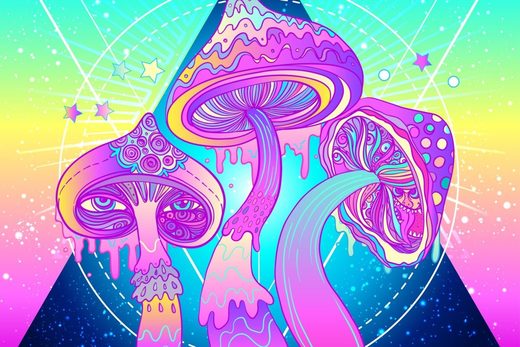The Centrality of Set and Setting
The Centrality of Set and Setting
With selective medical legalization of psychedelics seemingly imminent, countless patients with mental health issues have high hopes for healing. However, results from clinical trials, safety ratings, and efficacy are usually the main focus. Those are all important, no doubt. Less discussed is what actually happens during a psychedelic-assisted psychotherapy session, such as set and setting.
The term “set and setting” has circulated a lot since psychedelics reached the mainstream, and even more so with today’s psychedelic renaissance. “Set” refers to someone’s mindset at the time of the psychedelic experience. This includes underlying beliefs, culturally integrated paradigms, past experiences, and anything else that influences how one experiences reality. “Setting” is the external environment in which the psychedelic experience takes place. Essentially, “set” is the internal world, and “setting” is the external world.
What’s so important about set and setting? And why are they so emphasized in psychedelic-assisted psychotherapy? Even just a cursory glance would make you think these are also fundamental pieces to traditional psychotherapy. And you’d be right. Psychedelic researcher Ido Hartogsohn writes, “If one were to read the accounts of 1950s and 1960s psychiatrists and psychologists about LSD, with the word “LSD” blacked out, one might have thought that the writers were discussing entirely different drugs.” He’s referring here to the curious aspect of psychedelics that makes them so effective as therapeutic tools.
Placebo Paradigm Shift
Experts often refer to psychedelics as “active placebos.” In fact, psychedelic-assisted psychotherapy has turned the whole notion of the placebo effect on its head. It’s one of the main reasons that psychedelics are so effective. There is no standard for the psychedelic experience, and the traditional cause and effect that we associate with drugs does not necessarily apply here. Two different people will almost certainly have two different psychedelic experiences.
This connects intimately to each individual’s “set and setting.” If you go into the experience thinking it will mimic a psychotic episode, as early researchers did, you will most likely have a psychotic episode. If you go into the experience expecting to meet the Messiah, you most likely will. Set and setting influence the experience. For therapeutic purposes, this is the key. You can prepare for the experience, expecting to confront old traumas, access your deepest emotional self, and gain insights. You can prepare and expect to heal, and research shows that you likely will.
Structure of Psychedelic-Assisted Psychotherapy
While there’s no standardized trip, there is a more or less standardized protocol for psychedelic-assisted psychotherapy. Most psychedelic treatments, as they’re being done in clinical trials, actually take around 12 sessions, only one to three of which include psychedelics. The first three to six sessions resemble more traditional psychotherapy. The client and the therapist establish a relationship built on trust and safety. The client’s problems are discussed and a framework for thinking about them is established. Then the therapist prepares the client for the actual psychedelic experience, which can be very intense. Basic principles are established, such as “If you come to a closed door, try to go through it.”
VGorbash/Depositphotos
This may sound highly abstract, but psychedelic experiences are unlike everyday experiences, and there is a high amount of synesthesia (when one sense is experienced as another). Synesthesia allows for the experiencing of repressed and terrifying memories in a new way. This creates the opportunity to confront and grapple with deep-seated traumas.
After establishing a trusting and safe relationship and preparing the client, the next sessions include the actual psychedelic substance. Because psychedelic experiences can last for up to twelve hours, two therapists are often present. Aside from the logistical benefit of this arrangement, many underlying issues go back to childhood and revolve around relationships with parents. Accordingly, MAPS’ guidelines emphasize the importance of having a male-female therapy team.
The final few sessions integrate the psychedelic experience, so it is usable and relevant to the patient’s healing going forward.
Psilocybin, LSD, & MDMA
Psychedelic-assisted psychotherapy usually occurs in a clinical setting. “Clinical” often conjures images of harsh lights, sterile hallways, and uncomfortable chairs. But with psychedelics, the setting is a critical piece of the experience. The lighting is softer, there are usually some spiritual-esque objects (a Buddha, some stones, etc.), and nice images or paintings on the walls. Plants are often present in the room as well. The client sits on a couch upon which they can fully recline if desired, with blankets and pillows on hand.
The psychedelic is usually administered in pill form. However, the pills are usually placed in some sort of ceremonial bowl, minimizing the “clinical” association. This is a good example of how set and setting interact. Presenting the medicine in a plastic orange pill bottle could alter the vibe and affect the whole experience. Soothing music can help guide the trip (setting), and the client may request certain genres or no music at all. Eye shades are also available to encourage a more inward experience and to limit unnecessary distractions. This is, above all, an internal journey.
For much of the time, the therapists are just sitting there, quietly observing. They allow room for the client to have their own experience and are there for the client’s safety, emotional and otherwise. The results rely on the client, and how willing they are to open up, dive in, and confront their demons. One of the most exciting aspects of psychedelic-assisted psychotherapy is that results continue to improve after the psychedelic experience. This is the importance of integrative mental health sessions. As the trip comes to an end, therapists guide the patient back down and make sure they are stable. A close friend or family member picks them up after the session.
Gallery
Recent Articles
2025 Year In Review
•
December 31, 2025

Loading...
A Tale of Crescendo ~ Chapter 5: The War Begins; Chapter 6: The Great Hall
- Bill Kurzenberger
Jorma Kaukonen 85th Birthday Celebration in San Francisco – Concert Review
- Kyle Siegrist
A Tale of Crescendo ~ Chapter 3: The West & The East; Chapter 4: The First Crescendo
- Bill Kurzenberger





